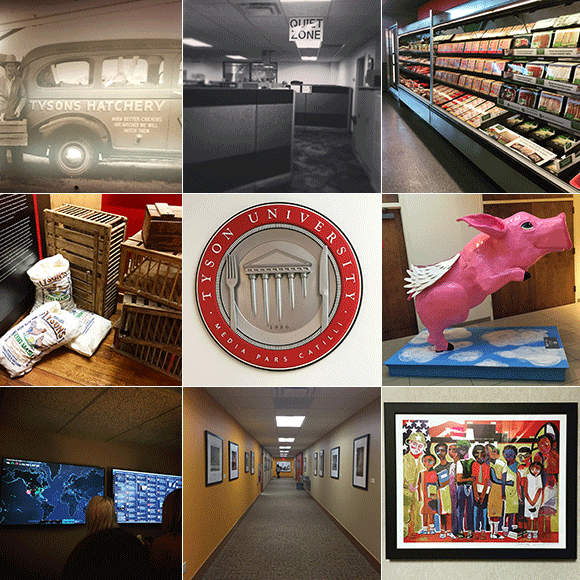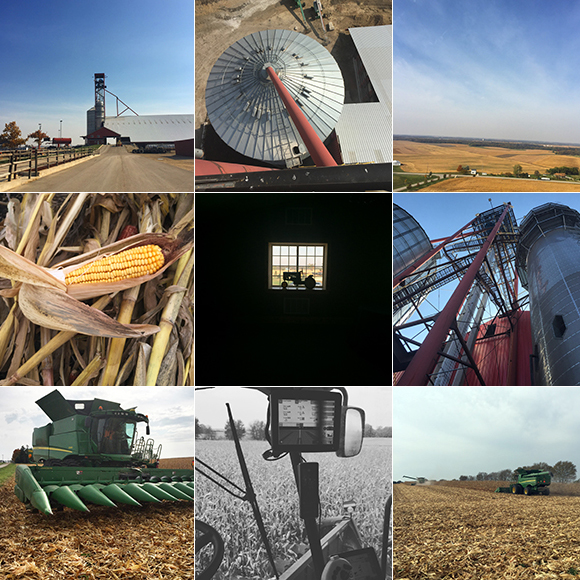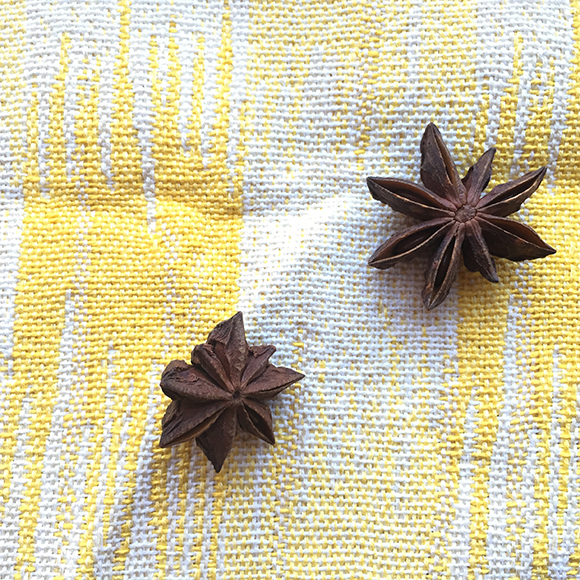
During my mid-twenties, I stopped drinking and eating dairy products. My circle of friends declared it evil. We thought it had too much hormones and antibiotics. Furthermore, so-called health experts said dairy products were bad for people of color, because milk wasn’t consumed in Africa. It wasn’t until a trip to Europe changed my views about dairy products. After all, who can resist European cheese, yogurt and butter? The day my dietary restrictions were thrown away, was the moment I was guiltily eating fresh baked bread from a danish bakery. It was a moment when a soothing thought crossed my mind, “Please eat everything. When is the next time I will visit Europe, again?” My guilt disappeared, as I feasted on European dairy products to discover I didn’t have a milk allergy. The irony? During the summer of my European feast, I lost weight. And, I fell in love with dairy-based ice cream.
When returning to the United States, I wanted the same quality of dairy products as Europe. I thought to have found it in organic dairy products, and the extra money was spent on it (more on organic versus conventional dairy in the next interview about the nutrition of dairy featuring Sarah, a Dietician with Best Food Facts). Today, whole-milk dairy products are used in my household along with a variety of nut milks. When it comes to dairy, I know my limits, such as not being able to drink a tall glass of milk, but I enjoy cheese, ice cream, using it in sauces, Greek yogurt and so on. When talking to friends who are first-generation African, they are often confused about African-American’s beliefs about dairy not being consumed in Africa. In reality, it’s consumed around the world, not only in Europe. Overtime, my early ideas about dairy being bad for my health were proven wrong.

Earlier in the year, I was invited to participate inBest Food Facts, Taste 15 tour to meet Krista Stauffer of The Farmer’s Wifee who owns a dairy farm with her husband. After writing about the pros and cons of GMOs, I wanted to explore the truth about dairy. Similar to my European experience of taking full advantage of the present, I took full advantage of Best Food Facts request to interview one of the farm bloggers. Krista was an obvious choice, because she writes a dairy farm blog that clarifies misleading information. Her common sense and pure scientific answers will challenge your mythological belief system about dairy. When reading her answers, I silently think to myself, “Duh… what was I thinking?”
I’m excited and grateful, Krista took the time to answer extensive questions about dairy farming. It’s brave of her, for in her pint-size frame, her fearlessness is based on facts.
Here’s the disclosure: My recent trips to Sacramento, Arkansas and Chicago, including all expenses are sponsored by Best Food Facts, and all opinions in this series are my own. Follow the hashtag #Taste15 to read about other food bloggers and farmers participating in the same program.

How did you get into dairy farming?
“Shortly after he moved to my hometown, we met at the local feed store. Now six years later, we have three kids and milk 140 cows. I did not grow up on a farm. In fact, the only farming knowledge I had was passing by the very farm we now farm on, which was no farming knowledge. It hasn’t been easy making the transition to farm life, but it has been worth it.” Read more about Krista’s story of how she became a first-generational farmer at “Being Part of a Farmer Owned Cooperative.”
What is the proper definition of a dairy farm?
A dairy farm is a farm in which milk is produced. It is either processed/sold on the farm or by a cooperative.
Since participating in Best Food Facts’ Taste 15 Program: Unearthing the Art and Science of Food, I learned the definition of factory and small farms is being misused by the media. What’s a better definition of various dairy farms?
“Farm size isn’t the only thing that makes a difference. Dairy cows need to be in a barn or on a pasture where they are comfortable and protected from predators. Farmers need to be sure their cows are well taken care of, and have the best nutrition and veterinary care possible.” Read more at Dairy Farm Sizes.
“The common denominator among the vast majority despite the size of the farm is a proud, caring farmer or farmers, doing their best to take care of the land and/or animals they rely upon often with future generations in mind. Usually they are carrying on a family tradition or striking out on their own after being inspired to do so.” Read more at “[Farm] Size: Does it Matter?” AsktheFarmers.com.
What’s a typical diet for a cow?
“Every dairy has their own special recipe.” Read more at Feeding Dairy Cows.
“Every farm feeds different for their herd. A lot depends on the geographical location of the farm, the fertility of the area soil, availability of commodities, price, and quality. There are so many factors that go into a feed ration; that’s why we work with a specialist!” Read more at “What do dairy cows eat?”.
“And what the heck is a rumen? You’ve probably heard that cows have four stomachs. That’s sort of right, but not exactly right. They have four compartments, and the last one is the most like our stomach. The first compartment is called the rumen.” Read more at Cows are Ruminants.
“So the cow ruminates. It’s a little gross, but also pretty neat. Bear with me…” Read more at “Rumination is Not Just for Thinking”.
“We started last week talking about how cows have 4 parts to their stomach, and then we talked about the first part,the rumen. The other three parts of the stomach are still important, but a lot less exciting.” Read more at The Other Three Parts.

How does the USDA determine labels, such as organic, free-range and so on?
To learn about USDA’s Food Safety and Inspection Service (FSIS), visit their glossary of meat and poultry labelingand labeling policies pages.
How has misinformation affected the dairy industry?
…It has hurt the industry tremendously. We now have people that are not familiar with how dairy farms work that believe we should not be feeding our cows the way we do or feel like we need to change the way we do things. It has created a lot of unnecessary fear.
What are growth hormones? Why would a cow be given hormones?
“…the false claims of cows being pumped full of artificial growth hormones is the claim that cows are milked their entire nine month pregnancy. This creates quite the concern as animals that are near the end of their pregnancy have increased amounts of hormones, what species doesn’t?…” Read more at “rBSTin Milk.” Krista notes: “We do not use it, in fact the entire state of Washington is rBST free.
Here is a post from a friend on the East Coast that does use it:
“The truth is that there is nothing to be afraid of. rBST or Recombinant bovine somatotropin is a synthetic version of the protein, bovine somatotropin, that is given to dairy cattle to boost milk production. Bovine somatotropin is a naturally occurring protein in all dairy cows that helps coordinate nutrients to the udder for milk production. Cows injected with the synthetic version are simply just being given more of a protein they already have.” Read more at Why Do We Use rBST on Our Farm?
What are antibiotics? Why would a cow be treated with antibiotics? When a cow is treated with antibiotics, how is its milk processed?
“The most common misconception I hear from consumers is that there are antibiotics in dairy products. That is simply NOT true…” Read more at Are There Antibiotics in My Milk?
“We take antibiotics seriously on our farm. I believe a common misconception is that we routinely give our cows antibiotics when they are not sick. Antibiotics are a last resort for us. We treat our cows depending on the illness.” Read more at “Dairy Diary – Confidently Raising Safe Milk – Day 5.”
According to ASPCA.org, cows produce ten times as much milk than a few decades ago due to growth hormones, unnatural diets and selective breeding. Is it true, are the facts distorted and/or is the statistic out of context with modern reality?
Cows do in fact produce more milk than they did when my great grandma milked cows. There has been a lot of advancements since then. For example: having clean bedding, cool barns in the summer, plenty of room to roam around, access to fresh water & new feed every day can increase their milk production. We have learned a lot about cows since those days. They may produce more milk, but it is simply because we are doing a better job of taking care of them.
Do cows spend the majority of their lives birthing calves to produce milk? If so, is this practice mentally and physically healthy for cows?
A cow, like any other mammal, has to give birth to produce milk. Read more at Average Age of a Dairy Cow.
After a cow matures to not being able to birth any more calves, what does the rest of her life look like?
Dairy cows are also part of the beef supply.
How a cow is humanely killed?
“We want to produce high-quality, safe food that consumers can feel confident about feeding to their families. And we know producers spend a great deal of time caring for their animals, so we make sure they are treated humanely, while maintaining the highest level of sanitation.” Read more at Inside the Process of Meat Processing.
For most people who are unfamiliar with farms, the life cycle of farm animals seem unfair. What’s the best explanation to comfort a person who has learned about how animals are killed for meals?
“At the end of the day, when the latest disturbing video has been watched over and over again; after all the interested parties have expressed their opinions, both experienced and inexperienced, knowledgeable or ignorant, hidden agenda or purely passionate, this calf trusts in the consumer to trust in the farmer and the farmer to instill trust in their employees to do what is right for her.” Read more at Who Can You Trust.

It’s a horrific experience to see videos or photos of farm animals being mistreated, such as images of a cow’s udders with mastitis — a painful bacterial infection causing a cow’s udder to swell; seeing calves’ tail or horns being removed; or cows sitting in manure. Are the videos and images isolated incidents that aren’t a true reflection of most farms, or are the videos taking situations out of context?
“There are bad farmers just as there are bad doctors, teachers, business owners and lawyers. Most hold themselves to a high standard. Don’t let one immoral person shape your opinions of a whole industry” Jodi, Of Kids and Cows. Read more quotes on Dairy Farmers Respond to Animal Cruelty Videos, AsktheFarmers.com.
When a video about farm animals being abuse goes viral, and the media is in a uproar about the safety of farms, what would you like the general public to know about the condition of most farms and their animals?
“When a new video comes out, I watch it. They leave me extremely upset with the abusers, the farm owner, the person that is just filming & doing nothing and they leave me upset with those that share it as if it is the “norm” of the industry. As a farmer, I need to know what people are seeing. One thing I often wonder, which I think maybe this is something only farmers might wonder? I wonder how many farms these undercover animal rights extremists have been on that they had nothing to report back on. Where is the footage of that?” Read more at Where is the Footage of the Good Farms?
“Milks from rice, almonds, coconut, oats, and hemp are not a replacement for cow’s milk. Cow’s milk has 8 grams of protein per cup while those other milks have only 1 gram of protein per cup. Each serving also provides about 1/3 of the daily requirement for vitamin D and calcium, two nutrients that can be difficult to find elsewhere.” By Mary Hartley, RD, MPH for DietsInReview.com for Isn’t it Time We Get Real and Learn the Milk Truth.
What is an exciting and emerging technology in the dairy industry?
Right now we use our manure as fertilizer. There are farmers that use it to produce electricity, others that compost it and then use it as bedding for their cows. There is a new push by our entire industry to find more ways. Using it as fuel, pellets for wood stoves, etc. Every possibility is going to be looked at. There is even a new company that has been formed solely for this purpose.
Thank you, Krista for taking the time to answer my Q&A. Read Krista’s interview with me at Food Blogger Interview After Dairy Farm Visit.
Learn about the pros and cons of GMOs in Part I: Come with an Open Mind.
Taste 15: Milk Does the Body Good, Part III, a Q&A with Sarah Downs, a registered dietitian with Best Food Facts, publishes the following day with a recipe for Star Anise Pumpkin Ice Cream.

You are such an amazing thinker and writer, Sanura. So many wonderful questions – thanks for providing this information about your #Taste15 journey!
Sanura,
Thank you so much for taking time to put this together and being so open-minded in learning about what we do on our farm. I appreciate it more than you will ever know.
Krista
I love your blog. It is extremely educational, eye opening, and entertaining.
Great article.